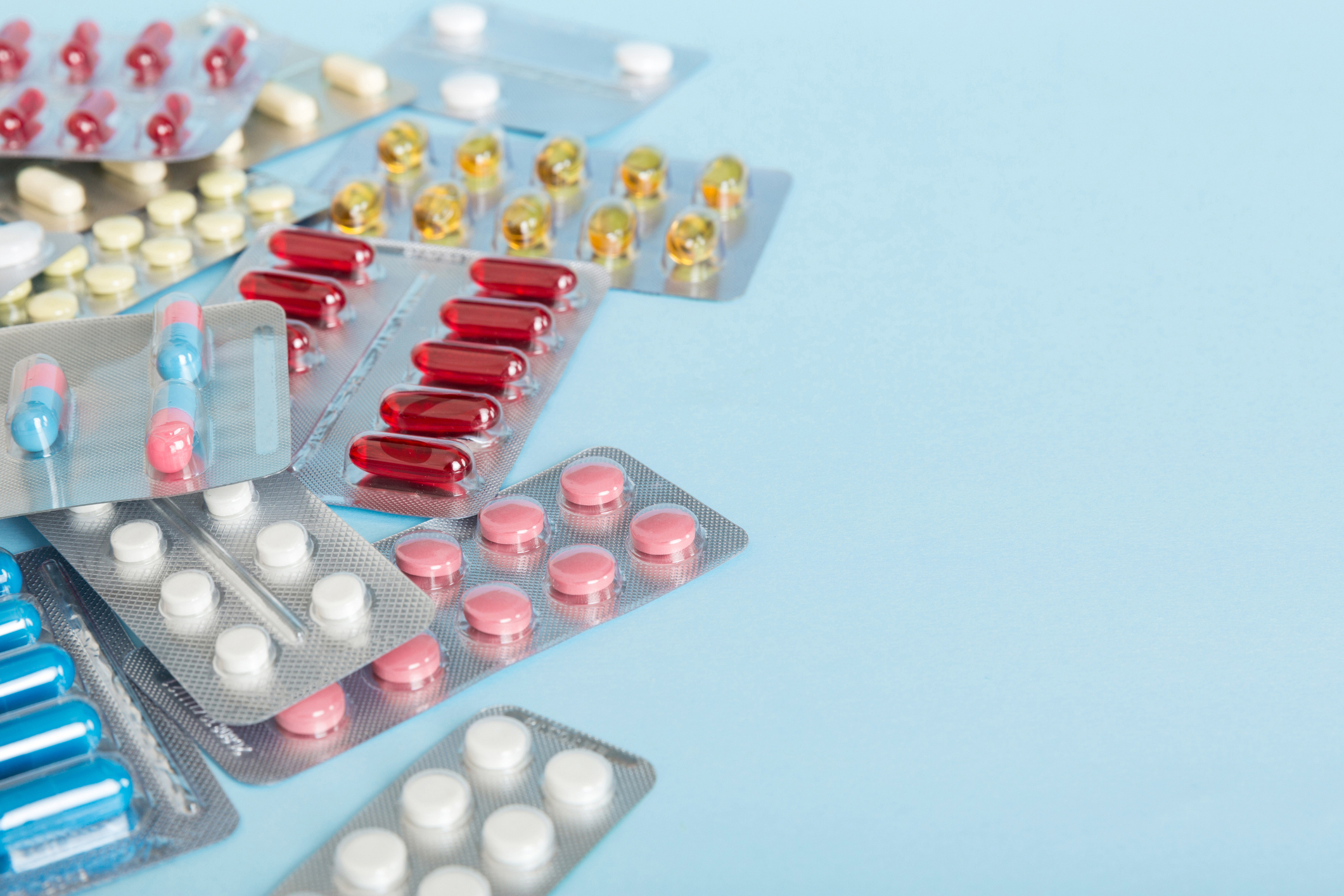While campaigning for President, RFK Jr. proclaimed:
“We are one of only two countries in the world that allow pharmaceutical companies to advertise directly to consumers on television. Not surprisingly, Americans consume more pharmaceutical products than anyone else on the planet . . . on my first day in office I will issue an executive order banning pharmaceutical advertising on television.”
After joining the Trump campaign, to resounding applause at a rally, he doubled down on that promise: “Let’s get President Trump back in the White House and me to DC so we can ban pharmaceutical advertising.”
In 2022, the U.S. pharmaceutical industry spent approximately $7.6 billion on direct-to-consumer (DTC) advertising, an increase from $6.8 billion in 2021.
I often marvel at the profusion of drug ads in the media. They’re relentless and slick, obviously produced with enormous budgets, employing big-ticket actors and celebrities. Some are accompanied by original jingles that must cost an arm and a leg to produce. Alternatively, as with Ozempic (Oh-oh-Ozempic! 🎶), drug marketers buy pricey rights to ear-worm Boomer hits. Some spots feature ingenious cartoon animation that surely call for big outlays.
One of my family members, a graphic artist, was lucratively employed for several years by an ad agency whose sole clients were drug companies. They employed scores of employees and even featured a Vice President who was an MD with an art and design degree.
What is it that they’re intended to accomplish? Is the average layperson with an ailment supposed to see one of these ads and obey the imperative to “ask your doctor” (nowadays “your prescriber”) if “(fill in the blanks) is right for you”? Are doctors just pliantly supposed to say “Fine, good call, here’s a prescription”?
Some have theorized that it doesn’t matter what they’re advertising; the return on investment for Big Pharma is media dependency on drug ads in aggregate as a big chunk of their underwriting, guaranteeing more favorable coverage of the drug industry. That may make reporters more likely to uncritically hail the next pharmaceutical breakthrough, and limit op-eds calling for reining in drug company excesses. In effect, is the media now a captive of Big Pharma?
It certainly seems so. According to the NY Times, the overall number of television advertisements for drugs increased by about 65 percent between 2012 and 2016. And they disproportionately target America’s growing population of seniors who watch legacy programs like The Today Show, network nightly news, as well as programs like Law and Order SVU, NCIS, and The Price is Right. Sixty-two percent of commercial breaks during General Hospital include a drug ad.
A 2018 analysis undermines the lofty argument that these ads are about educating medical consumers:
“We found a substantial decrease in the percentage of ads that conveyed information about the conditions being targeted, such as risk factors (16%) and prevalence (16%). Positive emotional appeals (94%) continued to be emphasized; yet there was decreased use of negative emotional appeals (51%), pointing to an overall more positive portrayal of a patient’s experience with a medication. The lifestyles portrayed in the sample largely featured how products can enable more recreational activities (69%) and fewer ads (7%) presented alternatives to product use.”
Happy people are shown smiling at social gatherings after taking powerful bipolar drugs; sufferers of Crohn’s Disease ingest hot dogs and pizza with their friends at fast food restaurants; and once socially-ostracized psoriasis sufferers rock their newly plaque-free bodies in bathing suits. Viewers are familiar with the drill: Upbeat music plays while actors cavort, oblivious to the grim recitation of dire side effects—a disclosure required by law— delivered by an unseen narrator . . . “cardiac arrest, stroke, elevated liver enzymes, suicidal thoughts, rare fungal infections . . .”
It’s not just Kennedy that’s been a foe of direct-to-consumer drug ads. The American Medical Association called for a ban in 2015:
“‘Today’s vote in support of an advertising ban reflects concerns among physicians about the negative impact of commercially-driven promotions, and the role that marketing costs play in fueling escalating drug prices,’ said AMA Board Chair-elect Patrice A. Harris, M.D., M.A. ‘Direct-to-consumer advertising also inflates demand for new and more expensive drugs, even when these drugs may not be appropriate.’”
And it’s a bipartisan issue. Last year, even before the current administration, Senator Angus King, an Independent from Maine, joined with Connecticut Representative Rosa DeLauro (yes, the purple-haired lady!), a Connecticut Democrat, to sponsor the “The Responsibility in Drug Advertising Act” which would:
“ . . . prohibit direct-to-consumer (DTC) advertising of a new drug in the first three years after the drug receives Federal Drug Administration (FDA) approval. The FDA could waive the third year of this prohibition if an affirmative value to public health is determined, or extend the prohibition if the drug has significant adverse health effects.”
Let’s summarize the case for banning DTC drug ads:
- They’re invariably for new, pricey drugs. These drugs are most profitable; they’re also the ones least subject to post-marketing studies, which may reveal unanticipated side effects that emerge after thousands of people take them over a period of years.
- There are often cheaper, equally effective drugs that they supplant. Just as Hollywood loves reliable sequels and remakes, so, too does the pharmaceutical industry covet “me-too” drugs that gin up profits once equivalent predecessors lose patent protection and go generic.
- They undermine the doctor-patient relationship. Ads pressure health practitioners into abandoning their clinical judgment and relenting to customer preferences. Engaging consumers directly is a way of bypassing the middleman.
- They minimize downsides. While drug companies are required to warn consumers of side effects, ads downplay risks. In an effort to “keep-it-simple-stupid”, they suppress nuance.
- They promote unnecessary drug use. Many powerful drugs are touted for patients with minor weight, skin, digestive, urinary, or mood problems, where the benefits (slight) may be exceeded by the risks (considerable). Americans are already the world’s leading consumers of medication, and we’re approaching a healthcare funding Armageddon.
- They prioritize pharmaceutical fixes over natural alternatives. By bombarding the populace with drug ads we inculcate the belief that for every ill there’s a pill. True consumer education would disclose that many conditions for which drugs are promoted are amenable to diet and lifestyle fixes, addressing root causes.
- Nobody else allows them. Every advanced country in the world, save two (the U.S. and New Zealand), manages to achieve high quality health outcomes, with lower per capita expenditures, without DTC drug ads.
And, indeed, analyses bear out these concerns. An article (“Spending on Consumer Advertising for Top-Selling Prescription Drugs in U.S. Favors Those With Low Added Benefit”) in Public Health reports:
“A new study led by researchers at the Johns Hopkins Bloomberg School of Public Health found that the share of promotional spending allocated to consumer advertising was on average 14.3 percentage points higher for drugs with low added benefit compared to drugs with high added benefit . . . The analysis also revealed that the majority—68 percent or 92 of the 135 drugs included in the analysis—of the top-selling prescription drugs sold in 2020 were rated as offering low added benefit.”
The lead author of the study commented:
“The findings suggest that shifting promotional dollars to direct-to-consumer advertising potentially reflects a strategy to drive patient demand for drugs that clinicians would be less likely to prescribe. When a consumer sees these advertisements on TV or social media, they should really question if it’s the best drug for them and have a conversation with their provider.”
Even worse are ads by proliferating telehealth companies that now purvey compounded copycat versions of weight loss, hair loss, erectile dysfunction, ADHD and even antidepressant drugs. By virtue of a technicality—since they don’t actually manufacture the drugs—they may circumvent requirements to explicitly state side effects. They’re even easier to obtain online without a formal doctor’s visit.
But it won’t be easy to enact a pharmaceutical ad ban. Politico writes:
“Any effort to limit truthful, non-misleading commercial speech about pharmaceutical drugs will almost certainly draw legal challenges from drugmakers on First Amendment grounds.”
Is a torrent of misleading drug ads the “free speech” most Americans crave?
When it comes to Congressional action, few realize to what extent legislators are beholden to Big Pharma. And drug lobbyists hedge their bets—OpenSecrets.com reports of the roughly $375 million contributed by pharmaceutical interests and device manufacturers to Congressional candidates from 1990 to 2024, it’s distributed roughly evenly between Republicans and Democrats. But among the top 20 contributors, 14 out of 20 went to Democrats.
Among the biggest recipients were Bob Casey (D-PA), Brett Guthrie (R-KY), and Jon Tester (D-MT), each receiving over $500,000 in the 2023-24 cycle. Despite party-line victories on other votes and confirmations, it’ll be tough to enforce MAGA discipline among Republican majority members, many of whom are conflicted, unless a considerable number of Democrats break ranks.
As to Presidential candidates:
Joe Biden $9.16 million
Kamala Harris $8.05 million
Barack Obama $6.07 million
Hillary Clinton $4.64 million
Donald Trump got money, too, but he may be perceived as a more mercurial ally of Big Pharma, receiving a piddling $1.33 million.
More opposition is likely to come from the broadcast industry and social media giants, highly dependent on pharmaceutical ads. Not to mention huge ad agencies; a trade publication reports:
“The advertising industry itself is also likely to rail against any potential ban, given that some companies depend on the healthcare sector for a significant chunk of their revenues. Interpublic, one such agency, makes 29% of its revenue from health ads, Barclays found, while others like WPP, Publicis, and Omnicom, get between 11% and 16% of their turnover from such ads.”
So it’s going to be an uphill fight, with Big Pharma and its surrogates using every trick in the book to block reform. But it’s a battle worth undertaking in the interest of American medical consumers.







